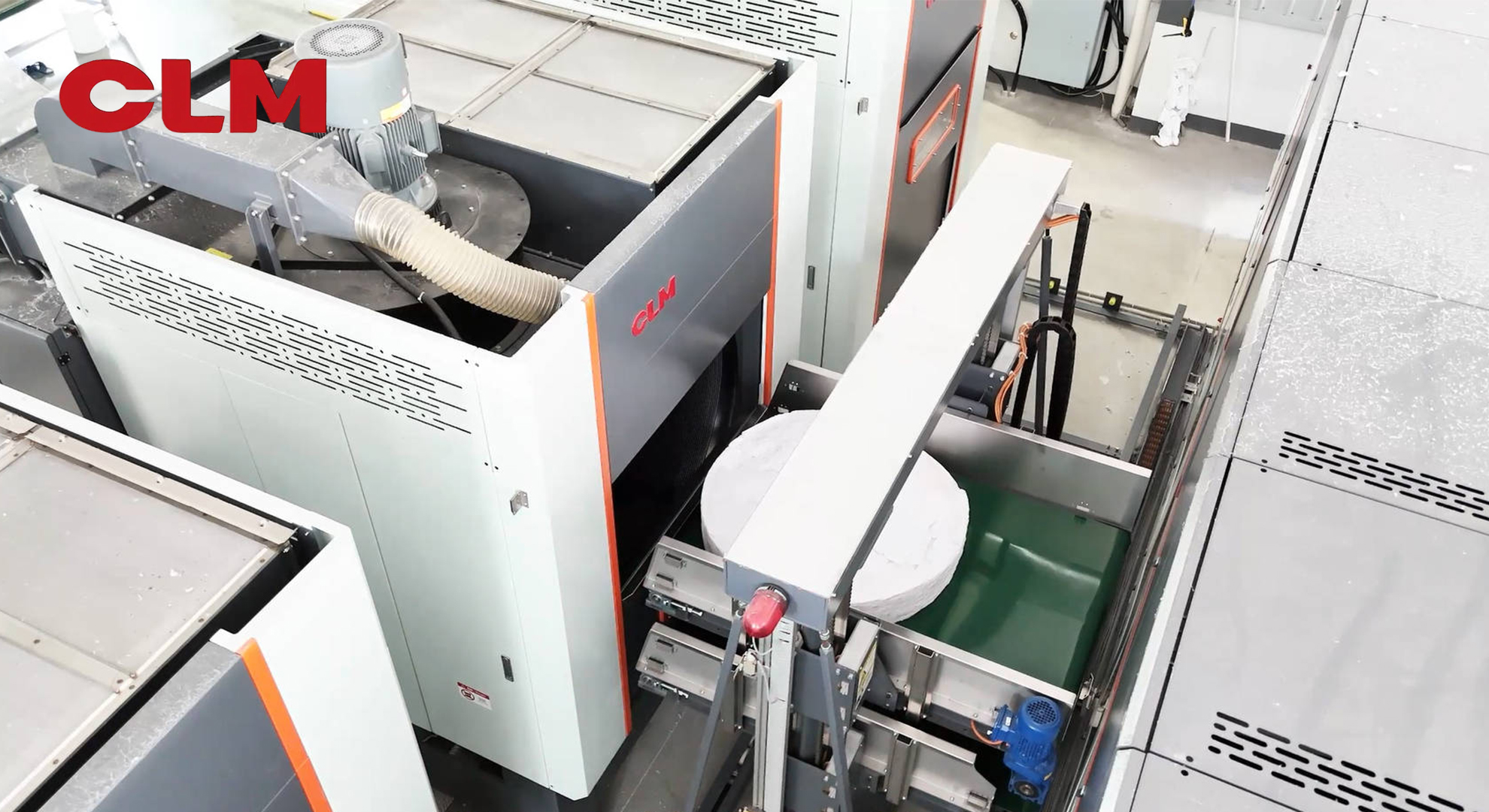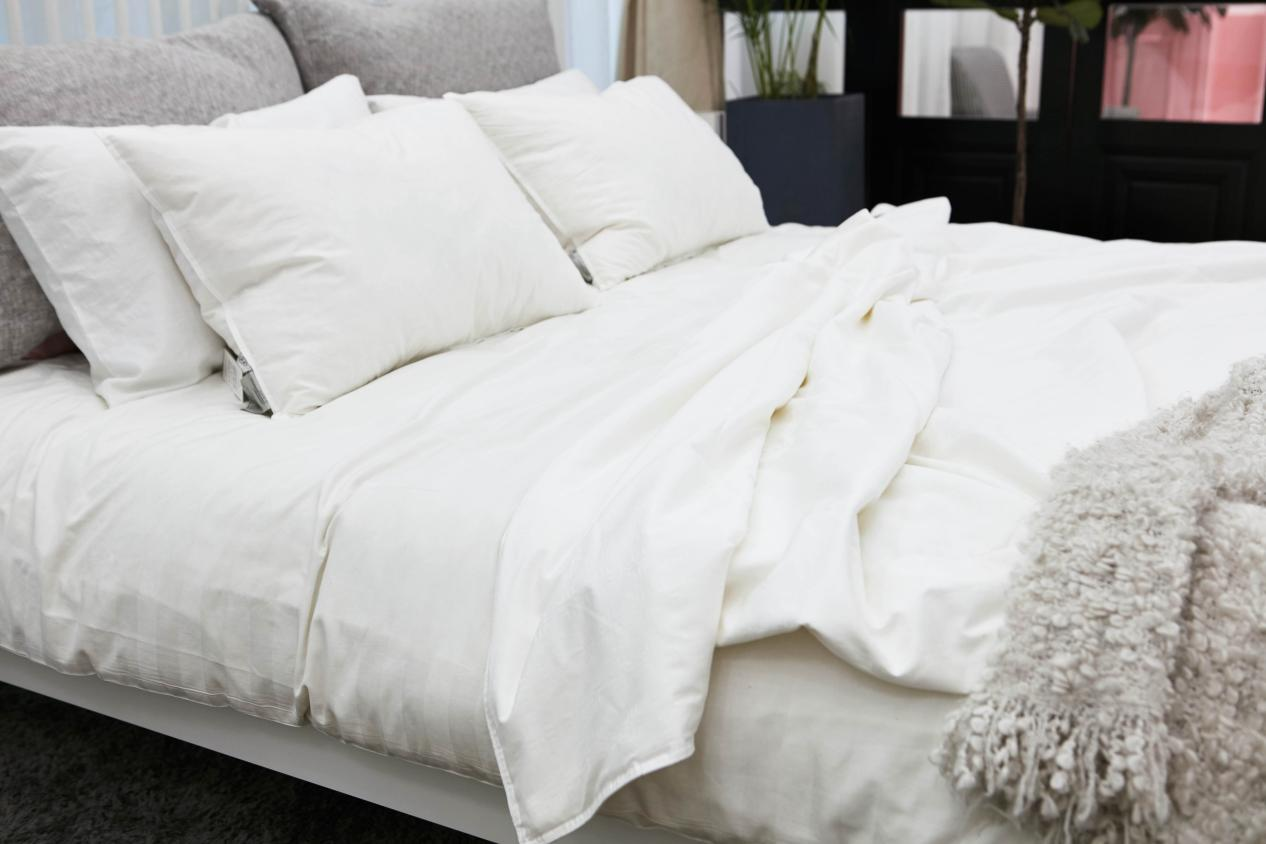In the daily operation of the hotel management, the whiteness of the white linen is the intuitive standard for measuring the laundry quality. Whether it is the bed sheets and quilt covers of the guest room in hotels, or it is the tablecloth in the restaurant, the white linen as bright and white as new always gives the guests the expression of freshness. However, many hotel linen laundry practitioners find that, though normal bleaching is done, the white linen may still have light yellowness or brown marks. This is not due to inadequate washing, but because the fabric itself will absorb a small amount of blue light from natural light, resulting in an unsatisfactory whiteness. As a result, the white linen should regularly receive the whitening treatment based on the scientific bleaching to achieve true whiteness and freshness.
Bleaching
Bleaching is the indispensable link of the white linen washing process. The first one is using oxidation or reduction reactions to remove the pigment stains, which cannot be easily removed by normal washing, restoring the original luster of the textile itself. The second one is improving the whiteness of the white textiles and improving the brightness of the bright-colored textiles.
After the rinse, pre-wash, and main wash, the water-soluble stains, oil-soluble stains, and some solid dirt can usually be effectively removed. However, coffee stains, blood stains, juice stains, and other pigment stains can only be removed by the oxidation or reduction reactions in the bleaching process. For example, the hemoglobin in bloodstains solidifies when exposed to heat and cannot be removed by normal washing, while bleach can break its molecular structure and convert it into soluble substances that are discharged with sewage. For white linen, bleach is not only for dirt removal but also the key to whiteness. It can break the adsorption of pigments by fabric fibers to lay the foundation for the following whitening.
Bleaching Duration
The bleaching effect cannot be improved as the duration is prolonged. The core is the release efficiency of the bleach. In the ideal condition (suitable temperature, pH value 10.5), the bleach can evenly dissolve in the solution in one minute after it is added. In 6 to 8 minutes, the effect of chlorine or other active ingredients basically finishes releasing. At this time, the concentration of the effective chlorine is about 10ppm. In the water drainage process, when the effective chlorine concentration is lower than 10ppm, the bleaching reaction is almost finished. Extending the time can only increase the energy consumption instead of improving the effect.
For a hotel linen laundry company, reasonably setting the bleaching duration can greatly improve the efficiency. For example, the bleaching programs of bed sheets, towels, and other batches of linen can be set for 8 to 10 minutes. It can both ensure the effective ingredients react and avoid unnecessary energy waste. Also, people should pay attention to the characteristics of the effective ingredients. The chlorine bleach quickly releases the effective ingredients, and the long-term bleaching may damage the fibers of the textiles. The oxygen bleach’s reaction is relatively mild, so that the duration can be approximately prolonged. (1 to 2 minutes is okay. The whole duration should be less than 10 minutes to avoid excessive reactions.)
The Bleaching Temperature
Temperature is a key variable that affects the bleaching efficiency. Different bleaches need different temperatures. Setting the wrong temperature can make the linen after bleaching even yellower.
● Chlorine bleach
It can be applied to white cotton textiles. The temperature should be under 65 ℃. This is because the chlorine bleach can be dissolved at high temperatures, which releases excessive free chlorine and leads to the brittleness, yellowing, and even damage of fabric fibers. Around 60℃ is the golden time of the chlorine bleach, which can both ensure the bleaching time and also reduce the damage to the fibers.
● Oxygen bleach
It can be applied to the colored linen or textiles that are sensitive to chlorine. The temperature can be set as 70℃ to 90℃. High temperature can activate the peroxides in the oxygen bleach and strengthen the oxidation capability, especially for the removal of stubborn stains. For example, after the 80℃ oxygen bleach, the oil-based stains will be dissolved. Not only can the oil stains be dissolved, but also the whiteness can be improved by more than 20%.
In addition, the temperature and the time should be adjusted in coordination. Generally, for every 10℃ increase in temperature, the bleaching time can be halved. Taking chlorine bleach as an example, the bleaching time is 8 minutes at 60℃, and the bleaching time needs to be extended to 15 minutes if the temperature drops to 50 ℃, if people want the same effect. The laundry company can flexibly adjust the combination of temperature and time to achieve a balance between efficiency and the service life of the linen.
pH Value
The pH value of the rinsing bath will directly affect the fabric fastness, which is an easily neglected parameter. The experiment shows that when the pH value is neutral (7), bleach causes the most severe damage to fabric fibers. In the acid condition, though the bleaching speed will accelerate, it will cause the fiber breakage and the decrease in strength, so that this can only be applied to extremely stubborn stains, and it is not recommended to use this method in normal washing.
For chlorine bleach, the best pH value is 10.2 to 10.5. In this condition, the activity of the bleaching agent is stable, which can not only ensure that the oxidation reaction proceeds gently but also minimize the damage to the fibers to the greatest extent. In the practical operation, the main washing and bleaching procedures can be designed to be carried out at the same time. The alkaline environment in the main wash process (usually pH value 10-11) can meet the chlorine bleach requirements without needing to adjust the pH value. This can simplify the process and reduce costs. The oxygen bleach should be done in a weakly alkaline environment (pH value 9 to 10) to avoid the acidic environments from damaging the structure of peroxides.
Whitening
Though it is under perfect bleach, the white linen can still not be bright enough because of the absorption of blue light. Under these circumstances, regular and quantitative whitening treatment becomes an important step. The whitening agents absorb ultraviolet light and release the blue light to compensate for the absorption loss caused by the textiles. It can improve the whiteness visually and make the linen have a white appearance.
The whitening treatment should be regular and quantitative. Excessive whitening will cause the linen to turn blue, which is not natural. The low frequency cannot maintain the effect of white and bright. It is recommended to do the whitening treatment once or twice for the linen that is frequently used every week. The whitening agents should be added at 0.1%-0.3% of the linen weight each time during the rinsing stage. Also, the whitening agents should be compatible with the bleach. The linen, after being treated with the chlorine bleach, should be rinsed thoroughly to remove residual chlorine. Then, the whitening process can be done. Otherwise, it will badly affect the whitening effects.
Conclusion
The whiteness and newness of the white linen are not accidental. It is the combination of scientific bleach and precise whitening. The hotel linen laundry practitioner should master the time, temperature, and pH value in coordination and make plans according to the usage frequency. Only by this can people maintain the whiteness and brightness of every piece of white linen. This brings hotel guests a consistently high-quality experience and also helps laundry enterprises win a more stable reputation and trust.
Post time: Sep-05-2025



